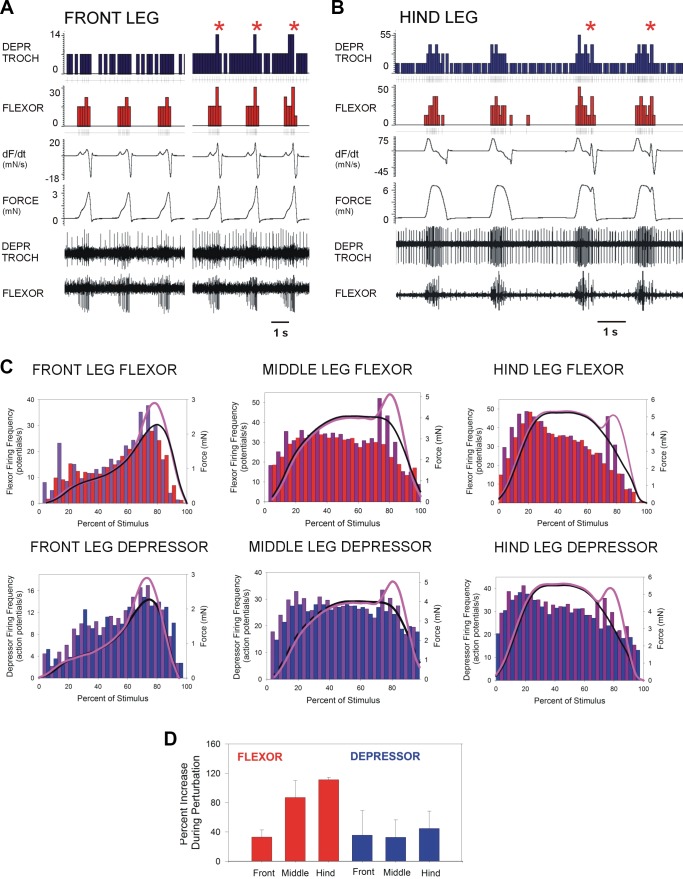Fig. 8.
Effects of force perturbations. A and B: forces were applied to the trochanter using torque waveforms (at left in each set) and waveforms that included a small transient force increase (at right, marked with asterisks). Transient perturbations produced brief increases in the level and rate of change of force followed by larger and more rapid decreases. Each perturbation elicited brief changes in firing frequencies in both the depressor (DEPR TROCH) and flexor muscles in the front (A) and hind (B) legs. C: cumulative histograms of tests of responses to normal and perturbed forces. Perturbations (shown in purple) elicited brief, rapid increases in motor outputs in all legs. D: percentage change in firing frequencies during perturbations. Percentage change in firing frequencies was calculated (perturbed/unperturbed) during the periods of perturbations in the experiments plotted in C. Increases in discharges occurred in both flexor (red) and depressor (blue) motor neurons in all legs. dF/dt, rate of change of force.

